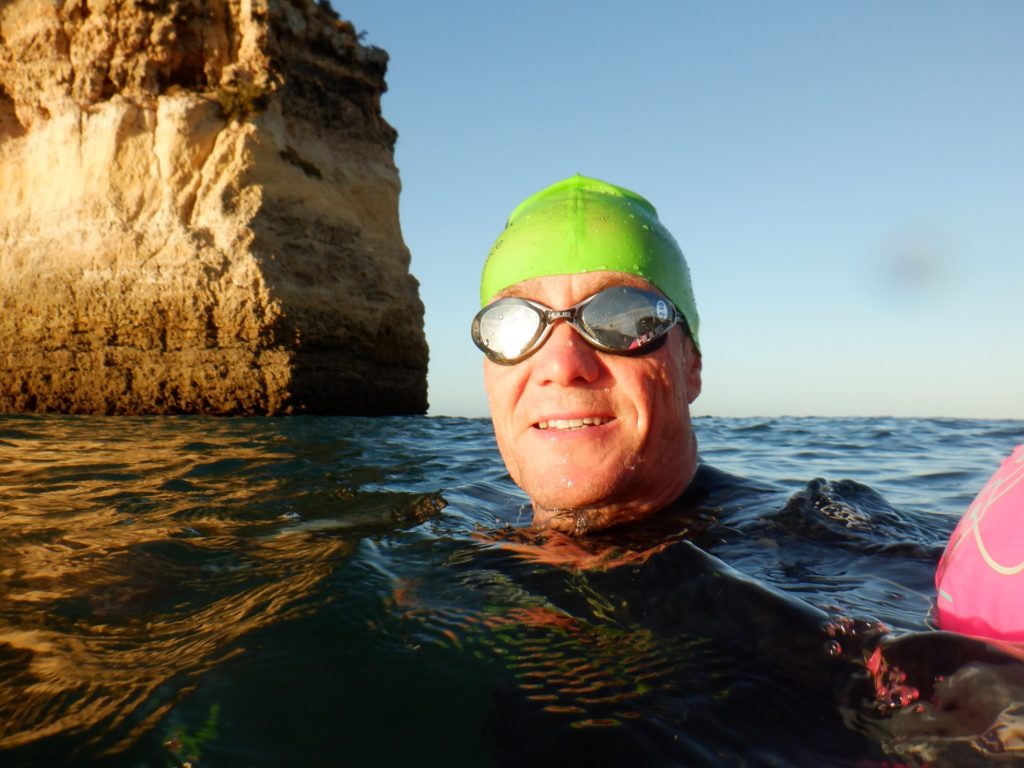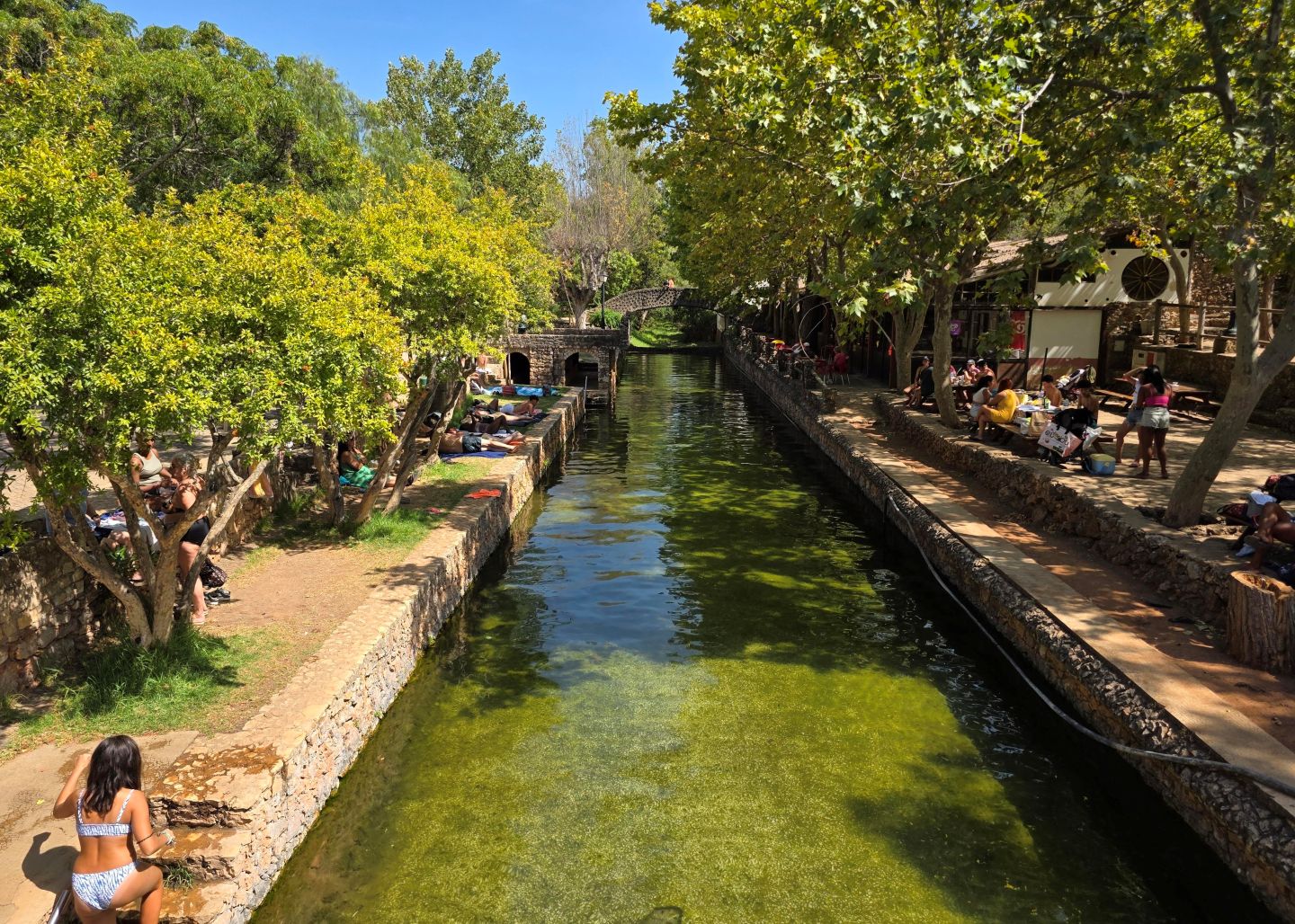Seeking out swimming spots and swimmers while travelling opens doors to connection, curiosity, and adventure.
The Alte River (Ribeira de Alte) emerges as a pair of springs near the village of Alte, in the Algarve Region of Portugal. In summer, the flow, at first, is little more than a trickle – a narrow stream you could step across. Yet the community has turned that stream into a fabulous recreational and social feature for the village.
A Stream Transformed
By building a dam across the stream and a large concrete basin, they’ve created a natural pool. Surrounded by trees, it’s pleasantly shaded compared to the Algarve beaches. There’s a café and an ice-cream seller.
On the Friday afternoon we visited, there was a group of teenage boys leaping and back-flipping off the walls into the deep end, young adults sunbathing and showing off their toned and tanned physiques, older people pootling up and down with gentle head-up breaststroke, and families with young children playing in the shallow end. It was happily and equally used by people of all ages.
Historic charm trumps modern health and safety
Admittedly, the water wasn’t easily accessible for anyone with limited mobility. It would probably fail to meet modern health and safety standards. The steps were uneven, slippery and without handrails. Where the boys were jumping, they had to clear a ledge before landing in the water. A miscalculation could result in serious injury. There was nothing to stop toddlers tumbling into the water.
But the atmosphere was welcoming and relaxed. A couple of lifeguards were keeping an eye on the freestyle jumping but not intervening. I enjoyed a few easy laps to loosen up for my race the next day (taking care not to swim near the jumpers).
Swimming as a lens for travel
I find looking for swimming spots a lovely way to discover a place I’m visiting. They tend to be used by locals rather than being overrun by tourists – especially if you aim for inland spots rather than beaches. However, being selective with your beaches is also rewarding.
Swimming spots are often found in pretty, tucked-away places. They take a bit of research to find and often prompt your curiosity. It’s a way to add purpose to your trip. It invites you to linger rather than cram as much as possible into your days. And it works well with almost anyone you’re travelling with. Everyone seems to love hanging out around water.
A universal swimming language?

On the same trip, I connected with some local swimmers who took me out into the Atlantic from their favourite beaches. It required some brutally early starts for a holiday, but it was worth it – sunrise is the best time of day for sea swimming in the Algarve. The beaches (and car parks) are deserted, the tourist boats haven’t yet started, and the rising sun turns the limestone cliffs golden.
Swimming groups always seem welcoming and fuss-free. After a few words of introduction, we entered the water and started swimming with the practised ease of long-standing training partners. After, we went for coffee and cake.
I’ve had similar experiences in many different places. I wonder if it’s a universal thing. Wherever there are swimmers, there’s a place for visitors and an invitation to a favourite local café.
Travel with purpose
Searching out swimming spots and groups while travelling is very “Renaissance Swimmer”. It’s humanist, curious and adventurous – and rewarding. It connects you with the rhythms of local life and has an authenticity you don’t find through polished tourist experiences. It’s more immersive!
Next time you travel – even if it’s not a swimming-related trip – see if you can somehow bring some swimming into it. It doesn’t have to be open water. Finding a new pool can also be fun and interesting.

